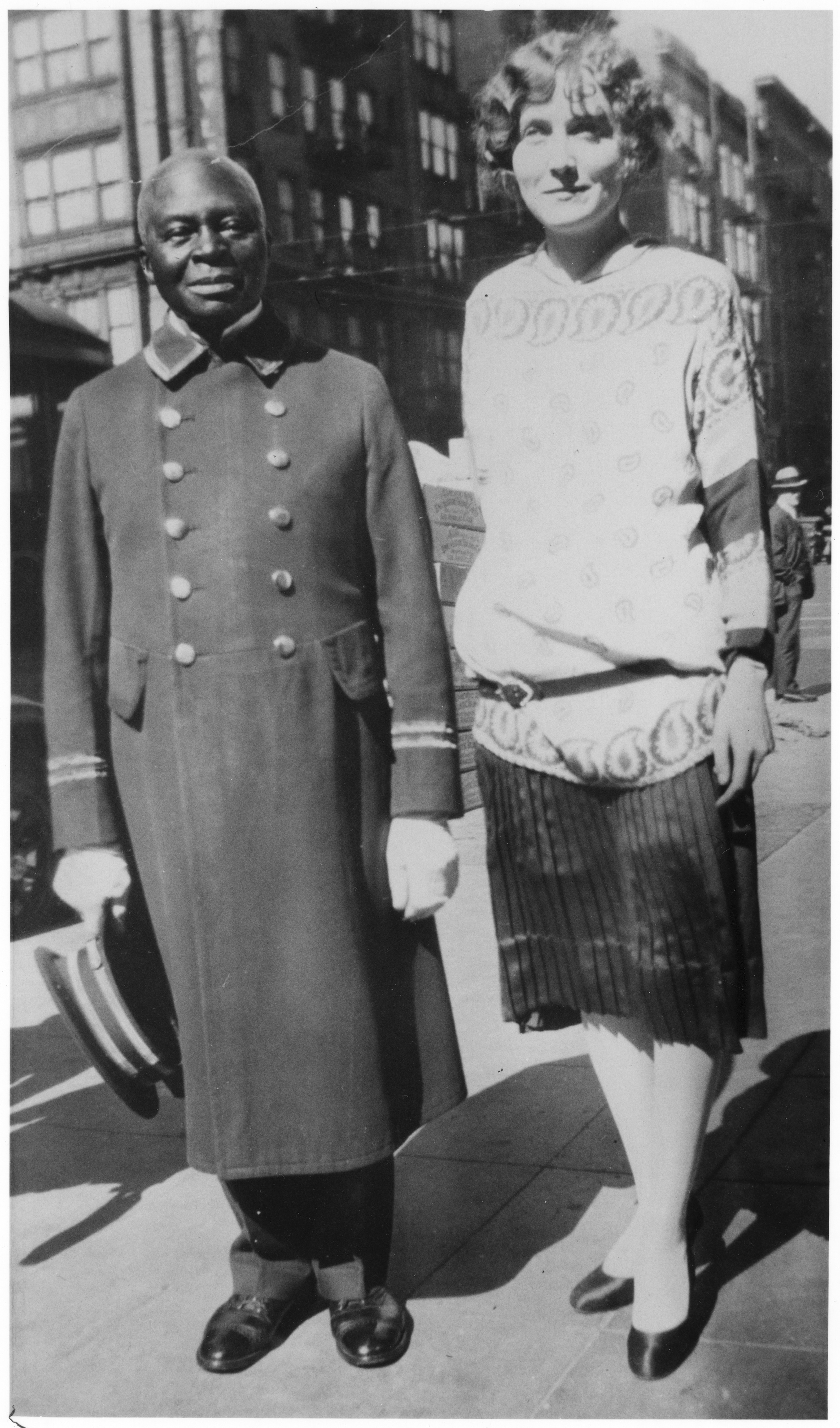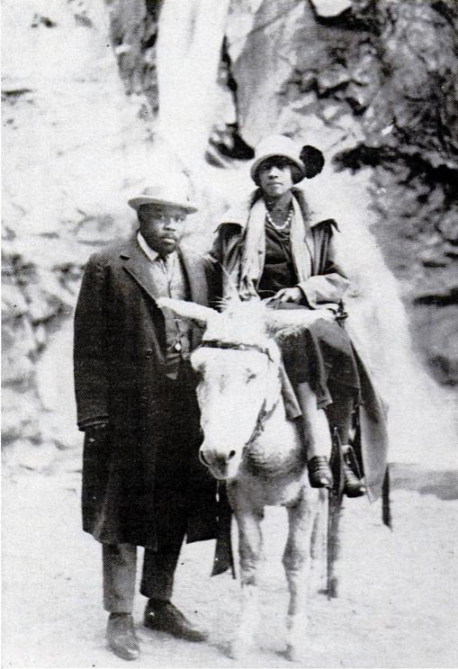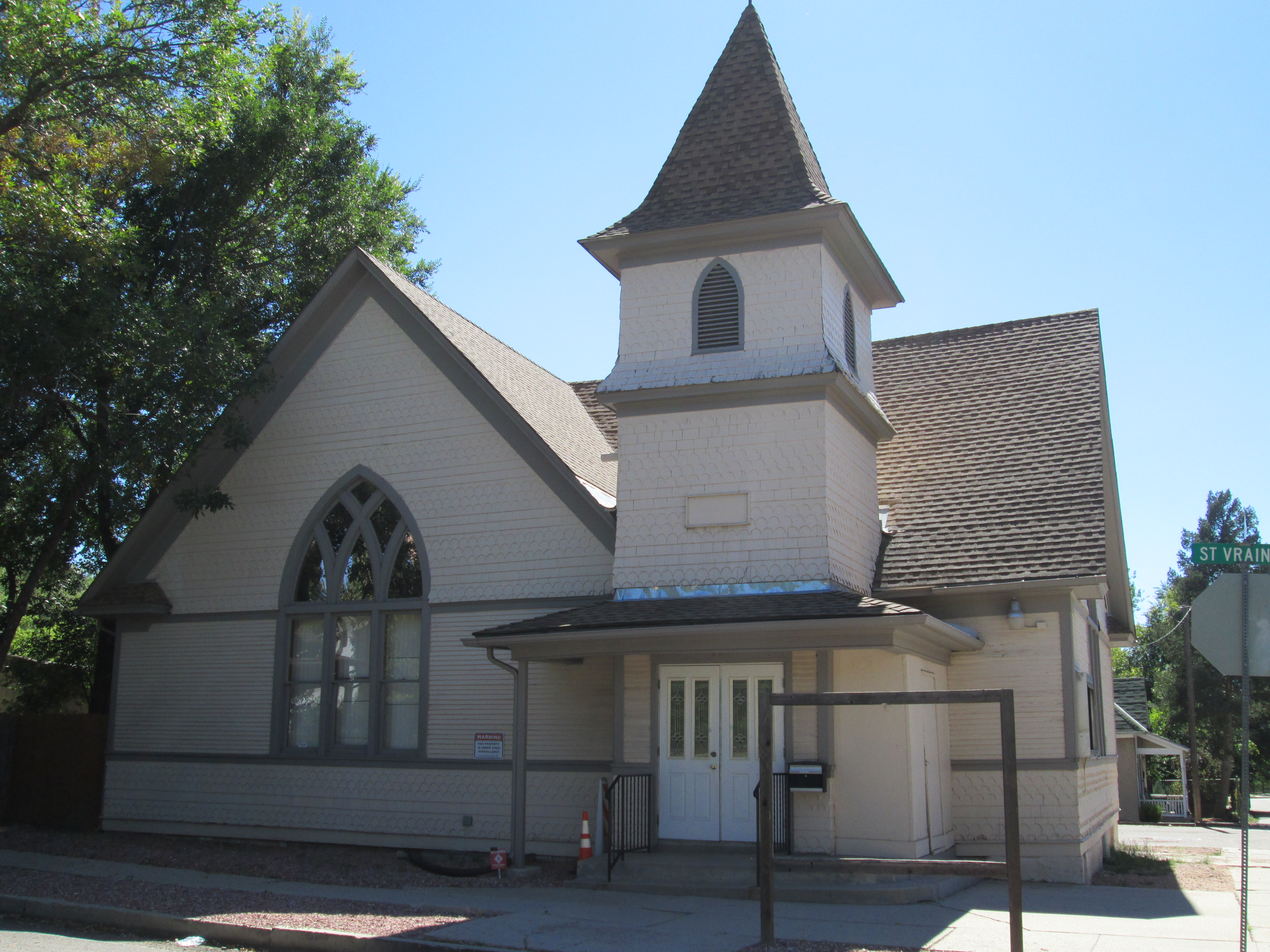
Story
Freedom, Faith and Black Empowerment in Colorado Springs
In February 1903, a small group of freedpeople and children of freedpeople, led by Frank Loper, formed the People’s Methodist Episcopal Church to serve the needs of the growing African American community in northern Colorado Springs. A stately Queen Anne–style church was completed in 1904 and for sixty-one years, the People’s Methodist Episcopal Church served as a focal point for social justice work while playing a central role in the social and religious lives of its congregants.

Frank Loper, circa 1925, when he was working as a doorman for the Antlers Hotel (pictured with Mrs. Glen Hutchinson, the hotel's bookkeeper).
Born into slavery at Jefferson Davis’s Brierfield plantation, Loper arrived in Colorado Springs in 1886. As headwaiter at the Antlers and Alamo hotels and later doorman at the second Antlers Hotel, he became well known to tourists and local residents alike. In the 1890s, Loper and two partners formed the Antlers Publishing Company and established the Colorado Springs Sun, the city’s second black-owned newspaper.
Over the years, the People’s Methodist Episcopal Church provided meeting space for civic and social organizations seeking to improve the lives of Black Americans, including the People’s Literary Society, Du Bois Study Club, Colorado Springs Unity Council, and National Association for the Advancement of Colored People. From 1921 to the mid-1930s, the church housed the headquarters of the Colorado Springs Division Number 508 of the Universal Negro Improvement Association (UNIA).
Founded by Marcus Mosiah Garvey, Jr., in his native Jamaica, the UNIA grew into one of the largest Black empowerment movements in the world. Garvey decried the rampant racism and unjust working conditions he witnessed while living in Jamaica and Latin America and established several newspapers devoted to publicizing social justice issues and promoting Black pride. Moving to London in 1912, he studied the work of leaders such as W.E.B. Du Bois and Booker T. Washington under the mentorship of Pan-African nationalist Dusé Mohamed Ali. Returning to Jamaica in 1914, he organized the first chapter of the Universal Negro Improvement Association and African Communities League in Kingston.

Marcus Garvey and his wife Amy Jacques Garvey in Cheyenne Canyon, Colorado Springs, May 1922. Published in Ebony, March 1960.
After his ideas gained little traction in Jamaica, Garvey relocated to New York City in 1916. He traveled extensively for a year, giving speeches and witnessing firsthand the unfair and hostile treatment Black people received throughout the United States. After returning to Harlem, Garvey’s Black nationalist rhetoric made him the target of federal investigations and put him at odds with Du Bois and some Black civil rights leaders. Nevertheless, Garvey’s message of Black pride resonated throughout the world and his influence grew quickly. In 1917 he opened the first US chapter of the UNIA in Harlem and his newspaper, Negro World, became the most widely read Black weekly in the country.
Colorado’s first chapter of the UNIA, Division Number 118, opened in Denver’s Five Points neighborhood in 1921. Shortly after, in January 1922, Reverend G. Sterling Sawyer, the new pastor at People’s Methodist Episcopal Church, organized UNIA Colorado Springs Division Number 508 with the church as its headquarters. In May, Garvey visited Colorado Springs as part of a multistate membership drive, delivering a speech to a large and supportive crowd at Colorado College.
Garvey returned in October 1924 with his second wife, Amy Jacques Garvey, who played a pivotal role in the UNIA, especially after Garvey’s incarceration in 1923 for mail fraud. Jacques Garvey stepped forward, continuing the UNIA’s work, editing Negro World, and proving herself a compelling orator. After Garvey’s release, the couple traveled west on a membership drive with stops in Denver and Colorado Springs.
On October 13, 1924, Jacques Garvey delivered a stirring message of Black pride at the People’s Methodist Episcopal Church. Her words impressed skeptics such as Dr. I. E. Moore, a physician in Colorado Springs and medical director of the Lincoln Sanatorium for Colored People, and inspired local UNIA members.
Garvey was again incarcerated in 1925 and deported in 1927, actions that began to erode the organization’s influence in the United States. In the 1930s, UNIA Colorado Springs Division Number 508 disbanded.
In 2014, the People’s Methodist Episcopal Church was listed in the National Register of Historic Places for both its architectural significance and, most importantly, its historical association with the Black empowerment movement in Colorado Springs.
Preservation Incentives Programs
Properties listed in the National or State Register may be eligible for investment tax credits for approved rehabilitation and to compete for History Colorado State Historical Fund grants. The next nomination deadline is January 29, 2021, and the State Historical Fund’s summer competitive grant deadline is forthcoming.
More from The Colorado Magazine
Trinidad’s Temple Aaron Looks to the Past to Secure Its Future In the spirit of renewal and perseverance, the people of southern Colorado and northern New Mexico have joined together to ensure a future for Trinidad’s Temple Aaron.
Vision and Visibility During this Native American Heritage Month, Kathryn Redhorse, director of the Colorado Commission on Indian Affairs, reflects on 2020 as a potential turning point in American Indian and Alaska Native communities’ long struggle for visibility, acknowledgment, and social justice.
Colorado Is My Classroom More than a century ago, open-air classrooms had a moment in response to another pandemic. Then it was tuberculosis, another era-defining airborne pathogen that attacked the respiratory system. And the results were encouraging. Could fresh air be part of the solution to school in the time of coronavirus?

